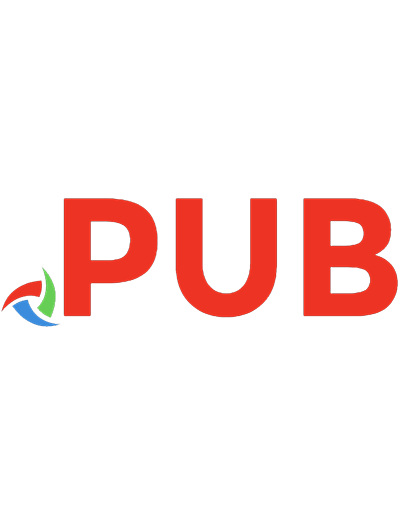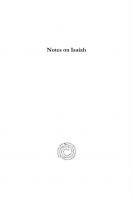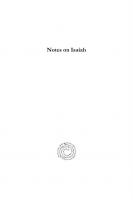A Prophet Reads Scripture: Allusion in Isaiah 40–66 9780804732161
578 82 25MB
English Pages 186
Polecaj historie
Citation preview
Nostalgia Jewishness is a lullaby for old men gumming soaked white bread. J. G LA D ST E IN, modernist Yiddish poet
A PROPHET READS'SCRIPTURE
CONTRAVERSIONS
ALLUSION IN ISAIAH 40-66
JEWS AND OTHER DIFFERENCES
BENJAMIN D. SOMMER
DANIEL BOYARIN AND CHANA KRONFELD,
EDITORS
"
: I,\;\'I.\;{I) I I \. l •.',». )\'"I I l I . / ,
i
c,}
, I I
I
',I
The task of "The Science of Judaism" is to give Judaism a decent burial. MORITZ STEINSCHNEIDER,
founder of nineteenth-century
Stanford University Press
philological Jewish Studies
I
~l
•
Stanford, California
1 BS
ISl~
.Sb~
)998
For my mother and to the memory of my father
":l~ i:>T~
1"~".:I:l' ~'.1"i1 1:l Ci1i:l~ .,~~~,
1i1:>i1 Tn.:I ~,~w, i1i':li i1'~'" n:l i1~~
run
... C~"~~ CO?=t~-~~ ~'O"::J.iJ ~i1~?~1 ~1'l~?:;~1 '''1)~?i? '~~-":¥
... 'i1~ "~7 rTz~ i~~i11 i1~1J ~7.~z;1.i;'1
I
.., ;
,. "u.o.... ~
Stanford University Press Stanford, Calif~rnia © 1998 py the Board of Trustees of the
Leland Sta~ford Junior University Printed iii·the United States of America
elP
data appea~at the end of the book
c"~~-i1~'~~ '7131 iiJ.l31 i1~IJ-n~ 'i1 'i2~-"~
PREFACE
in this book are my own, unless otherwise noted. Chapter and verse references to the Hebrew Bible are to the Masoretic text. Referencesto commentaries on biblical books and to the Hebrew University Bible Project (edited by Moshe Goshen-Gottstein) are to the section concerning the verseunder discussion unless otherwise noted. For example, in a discussion of Isa 40.1, the comment "See Skinner" means "See the section on Isa 40.1 in Skinner's commentary." In a few cases where a commentator's treatment of a verse is extremely long, I add a page number. Mindful of the Jewish prohibition on pronouncing the four-letter personal name of God, I do not write out that name in full but instead include only its consonants, thus: ((YHWH:' In Hebrew quotations, I substitute the
ALL TRANSLATIONS
symbol';' for that name, lest the book's pag~s (and those of the many drafts
that preceded it) be rendered sacred according to Jewish law and thus unfit for disposal except in a cemetery. For the same reason, I spell the Hebrew word for ((God" 0';'7-1\. I transliterate some items for the benefit of readers who know no Hebrew but may want to appreciate Deutero-Isaiah's often ingenious puns. Because these transliterations are intended for non-specialists, I avoid arcane symbols dear to members of my guild; thus I write not seya!!.fnu hammaskilim la!!.addam but sheyabinu hammaskilim lrbaddam. I do include symbols for phonemes not found in English, such as b (pronounced like the "ch" in
VII
"Bach"), ( (a voiced guttural fricative), and) (a glottal stop); these are necessary in cases of paronomasia to show the close resemblance between Deutero-Isaiah's wording and that of his source. The letters ei in transliterations are pronounced as in the English word "weigh:' For the convenience of readers of Hebrew, I include vowels in the first occurrence of most biblical quotations; for the convenience of the publisher, I dispense with vowels in subsequent instances unless they are crucial to the argument.
The first seeds of the harvest that follows were planted during my high school years in a class on Deutero-Isaiah at the Prozdor School of the Jewish Theological Seminary in New York. I was fascinated to learn from the class's . teacher, Rabbi Bruce Dickstein, that the exilic prophet had paraphrased several verses from Psalms and Jeremiah; I did not yet know where the excitement of studying these texts would one day lead me. My gratitude to the faculty of that school, and especially to its principal, Rabbi Herbert Kavon, is deep and abiding. More seeds were sown during my years in graduate school, during which I studied Isaiah with Professor Shalom Paul at the Hebrew University,Professor Steven Geller at Brandeis University,and Professor Rolf. Rendtorff at the University of Chicago. I first wrote on this topic in a graduate seminar at Brandeis taught by Professor Michael Fishbane, and I expanded ideas from that paper in my University of Chicago doctoral dissertation. This book presents a substantial revision of the dissertation, which was directed by Professor Fishbane and read by Professors John Collins and Marc Brettler. Professor Collins's helpful observations and friendly manner guided me in directions I would otherwise have missed and enriched my thinlcing. Professor Brettler read the dissertation with great acuity, and his advice improved both dissertation and book. As an undergraduate, a graduate student, and now a colleague, I have benefited from his challenging rigor and his warmth, from his outstanding pedagogy and his friendship. It is a privilege for me to term myself his student. In many ways and for many years, Professor Fishbane fostered my growth as a scholar. He promoted original thinlcing, respected differences of opinion, and helped me avoid numerous pitfalls as I moved from paper to
VIII
PREFACE
dissertation and from dissertation to book. His impact on this bookthrough his generous and penetrating comments, his own writings, and the example he set as a careful yet bold reader-is vast. My gratitude to him goes beyond words, but I hope that this book's contribution to the study of innerbiblical exegesis, a field he pioneered, pays part of a limitless debt. Professor Shalom Paul inspired my analyses on Deutero-Isaianic allusion through his own writing, his class on Deutero- Isaiah, and the encouragement and counsel I was fortunate to receive from him as I wrote this book. In its earlier incarnations, this work benefited from my discussions with Stephen Hall, Daniel Klerman, Esther Menn, Michael Satlow, William Schniedewind, Colleen Stamos, and Anthony Tomasino. The book itself has been enhanced by advice from several colleagues: Professors Jacob Lassner, Richard Kieckhefer, Daniel Garrison, and Manfred Vogel. I am especially grateful for the comments of Professors Robert Alter and Chana Kronfeld. I would like to express my thanks to Professors Kronfeld and Daniel Boyarin for accepting the book in the Contraversions Series and for their encouragement, and to Helen Tartar and the editors of Stanford University Press for their many valuable observations. In the preparation of the manuscript I was capably assisted by Mr. Daniel Shulman, Ms. Aline Linden, Ms. Elisa Marcus, Ms. Karina Hogan, and Ms. Shari Lowin. My thanks go to the Office of the Dean at the College of Arts and Sciences of Northwestern University for awarding me an AT&T Junior Faculty Fellowship,which allowed me to prepare the book for press. I am obliged to Rabbi Steven Forstein for suggesting the book's title; to a lover of Jewish books, Mr. Stanley Batlcin, for permitting me to use art from his collection on the cover and for his assistance in finding a fitting image; and to the artist, Mr. Shraga Weil of Kibbutz Ha-'Ogen in Israel, for his consent as well. As I finish what I hope is a contribution to Hebrew scholarship, I recall with appreciation mentors of my youth who encouraged me to pursue Jewish learning and introduced me to critical and literary approaches to the Bible: Rabbis Andre Ungar and Matthew Kanig, and my teachers Larry Malitzky and Joel Laitmann. When I first wrote a paper on Deutero-Isaiah's allusions, I had not yet. met Jennifer Dugdale. As I wrote the dissertation on which this book is based she gave me firm support and tender affection; the day after the
PREFACE
IX
opening words of Deutero-Isaiah's prophecy were chanted in the liturgy for ,~nJ n:tiV of 1995 we were married; and as I wrote the book itself, she gave c",:giU~ m~'71J"1 ii"j"· "":t~~ ·M~-~Jn. her advice and love. ii"W:g~ T .: -: • T: T· T. T • T : For a longer time and with greater effect than any others, my parents nurtured my love of Iewish learning and hoped that I might contribute to it. My only sadness as I complete this work is that my father did not live to see it. I am heartened to know he was confident that this day would arrive and to know of the joy it will bring to my mother. It is dedicated to them.
CONTENTS
B.D.S. August 1997
T".3W.n ~::not CnJ~
INTRODUCTION
1
1
LITERARY THEORY AND THE STUDY OF INNER-BIBLICAL ALLUSION AND EXEGESIS 6 Influence and Intertextuality Allusion and Influence Reasons for Allusion
6
10
18
Inner-Biblical Allusion and Exegesis 2
20
DEUTERO-ISAIAH'S USE OF JEREMIAH
32
Genuine Dependence or Coincidental Similarity? 32 Identifying Deutero-Isaiah's Allusions 35 Reversal 36 Reprediction 46 Fulfillment of Earlier Prophecies
57
Typological Linkages 60 The Character Jeremiah as Type 61 Echo 66 Stylistic Features of Deutero-Isaianic Allusion
X
PREFACE
67
XI
3
THE APPROPRIATION OF PROPHETIC TRADITION
73
ABBREVIATIONS NOTES
Reversal 75 Reprediction
Historical Recontextualization Typological Linkage
92
93
Fulfillment of Earlier Prophecies Multiple Categories
34-35
INDEX OF BIBLICAL CITATIONS
333
AND
4 0 - 66
315
351
100
104
FROM POETRY TO PROPHECY: TRANSFORMATIONS OF PSALMS AND LAMENTS 108 Identifying Allusions to Psalms Repetition of a Promise
108
111
Nationalization of the Promise to David Response
112
119
Repetition and Echo
122
Deutero-Isaiah and the Book of Lamentations
127
Deutero-Isaiah's Use of Poetic Texts and His Allusive Project 5
299
CHART OF ALLUSIONS IN ISAIAH
INDEX OF SECONDARY SOURCES
96
Echo 104 Isaiah's Influence in the Context of Deutero-Isaianic Allusion 4
203
BIBLIOGRAPHY
78
199
DEUTERO-ISAIAH'S USE OF PENTATEUCHAL TEXTS Deutero-Isaiah's Use of Deuteronomy
130
132
134
Deutero-Isaiah's Use of Other Pentateuchal Material
140
Deutero-Isaiah's Use of Pentateuchal Texts in the Context of His Inner-Biblical Allusions 149 6
LEARNED TONGUE, INSPIRED TONGUE The Poetics of Allusion in Isaiah 40-66 Deutero-Isaiah's Sources
152
152
167
Deutero-Isaiah's Allusions in the Context of Inner-Biblical Exegesis and Allusion 1h Deutero- Isaiah and the Decline of Prophecy
173
APPENDIX: WAS THERE A TRITO-ISAIAH? DEUTERO-ISAIANIC ALLUSION AND THE UNITY OF 35, 40-66 187
XII
CONTENTS
CONTENTS
XIII
A PROPHET READS SCRIPTURE
ALLUSION IN ISAIAH 40-66
~'i
~.
'.
C/J'.D'l-t~:l~ C,r",l\jJ C'~':+~jJ . . " n'':tQ~ n~ ~~':'(tq0 ...., . . : .. '
.n'~~~
n'l-t~:l-t 10~ '7 il~i!311~'l-t Di?77t ~~~
The great prophets threw outhalf their prophecies I gather them up and make myself poor prophecies from them. YEH UDA AMI CHAI ~ "I Am a PoorProphet" (1989)
INTRODUCTION
THE ISRAELI POET Yehuda Amichai discloses in these lines a sense of belatedness, even of inferiority. Following a long tradition of Hebrew writing, he is only able to gather up what was discarded, to glean in a field already planted and harvested many times over. The problem this modern Hebrew writer confronts is a common one in twentieth-century literature, but it affects the Hebrew writer with particular intensity: his predecessors wrote not only books but The Book; not only words but The Word. The tradition he wishes to augment does not merely include a canon, .a flexible cluster of great works serving as source and context for any new writing. It incorporates thecesion, a collection of prophecy, narrative, and law sanctified and closed some twenty centuries earlier. More than most writers, Amichai has reason to feel incapable of producing anything truly new; he can only reuse and revise what he inherits. Even as an inheritor, as a revisor, Amichai cannot but see himself as a latecomer, for the most prominent genres in the Hebrew literary tradition have long centered around the reworking or interpretation of the Source. Some of these genres are overtly exegetical:these include the midrash of the rabbis, the pesher ofthe Dead Sea community. Others are more bold and revisionary: think, for example, of attempts to create new scripture based on the old, such as the Temple Scroll, produced by the Dead Sea community, or the New Testament. Allusive or anthological genres exist as well: for example, both liturgical and secular
poetry written by Jews.in the Middle Ages. If Amichai seeks consolation as he attempts to reread what was reread many times before, he can at least recall that he is in good company: Hillel and Jesus and Qumran's Teacher of Righteousness, Akiva and Paul and the kabbalists all stood where he stands,
but highly allusive, corpus: Isaiah 40-66. These chapters were written during and after the Babylonian exile in the sixth century B.C.E. We may call the prophet (or perhaps prophets) responsible for these chapters «Second Isa-
gathered in the field where he gathers. But it is not only the post-biblical authors who experienced this relationship to texts from the Bible. For, as biblical scholars have increasingly real-
iah"or "Deutero-Isaiah."2 This prophet lived in Mesopotamia a generation after the Babylonian empire destroyed the Iudean state and sent much of its population into exile. Deutero-Isaiah anticipated the victory of the Persian
ized in recent years, the biblical authors themselves also comment on, ex-
empire over the Babylonian, and he' promised his fellow Iudean exiles that the Persians would allow them to return to their homeland and rebuild their
plain, revise, argue with, and allude to texts written by their predecessors.
I examine in this work the use of earlier biblical material in one limited,
1
The implications of this phenomenon, which we may call inner-biblical
temple there. Parts of these chapters also treat the situation of the returnees
allusion and exegesis, are important both for students of the Hebrew Bible and for students of the religious and literary traditions that grew from it.
in the Land of Israel itself. A close examination of these chapters shows Deutero-Isaiah to be one of
The presence of biblical exegesis within the Hebrew Bible itself shows that
the most allusive ancient Israelite authors. As he composed speeches of
the religion of the ancient Israelites was already a text-based religion, a set of
comfort and encouragement, he reformulated single lines and whole sec-
beliefs and practices dependent not only on oral traditions but also on
tions from the work of his predecessors. By studying these reformulations,
authoritative documents. As prophets, priests, scribes, and psalmists modi-
we can enrich our understanding of individual passages in this writer's
fied tradition in ancient Israel, they had to take these documents into ac-
work. Further, we can gather evidence to answer a crucial question: Why
count, whether by revising the earlier texts, explaining them in new ways,
does this prophet allude? Why does he rely on his predecessorsr' The an-
applying their principles to new situations, or relying on their authority.
swers to this question illuminate a significant moment in the development
It follows that the religion which generated the Hebrew Bible in a crucial
of inner-biblical allusion and exegesis, and hence they clarify the activities
respect resembles the religions generated by the Hebrew Bible. Israelite
that later gave rise to Judaism and Christianity. The examination ofDeutero-
thinkers, like those of Iudaism and Christianity, looked back to existing texts
Isaiah's use of earlier material allows us to sharpen the tools with which
and constructed new works in relation to those earlier ones. This exegetical
biblical scholars approach the phenomenon of inner-biblical allusion and
and revisionary activity among biblical authors illuminates the parallel ac-
exegesis in general. Answers to the question "Why does Deutero-Isaiah al-
tivity that was to become central in classical Judaism and Christianity-an
lude?" also help us understand the transformations of prophecy in late
activity, indeed, that produced classical Judaism and Christianity. The study of how biblical authors used or reacted to their predecessors, then, can be
Israelite religion. The orally delivered oracles that had predominated earlier were eclipsed in the post-exilic era by written works patterned after the older oracles. Through investigating Deutero-Isaiah's use of earlier oracles, we
very suggestive. It allows the historian of religion to note correlations beof those who inherited the Hebrew Bible came into being. It suggests that
deepen our understanding of this development. In Chapters 2 through 5 of this book I examine allusions in Isaiah 40-66
biblical authors bequeathed to their successors not only a text, but ways of
in order to uncover their recurrent thematic and stylistic traits. I turn first to
relating to and re-creating that text. The study of inner-biblical allusion and exegesis demonstrates that certain concerns are not exclusivelypost-biblical
Deutero-Isaiah's use of Ieremiah, because the work of Iererniah is the source
tween the way the Hebrew Bible came into being and the way the literature
for the largest number of allusions in Isaiah 40-66; subsequent chapters treat allusions to Isaiah ben Amos (that is, Isaiah the son of Amos, whom many biblical scholars label "First Isaiah"), the Book of Psalms, and other texts. I do not discuss every allusion in detail; instead, representative exam-. ples of certain techniques are used to typify Deutero-Isaiah's use of earlier
ones; these include questions of authority, of the relationship between new ideas and an existing canon, of new poetry's status next to older prophecy. Just as Hillel and Amichai grappled with these issues, so too did the biblical authors themselves. ,'r
2
'. INTRODUCTION
INTRODUCTION
3









![Isaiah 1-39 (Ancient Christian Commentary on Scripture Book 1) [1st ed.]
9780830897353, 9780830814800, 0830897356](https://dokumen.pub/img/200x200/isaiah-1-39-ancient-christian-commentary-on-scripture-book-1-1stnbsped-9780830897353-9780830814800-0830897356.jpg)
